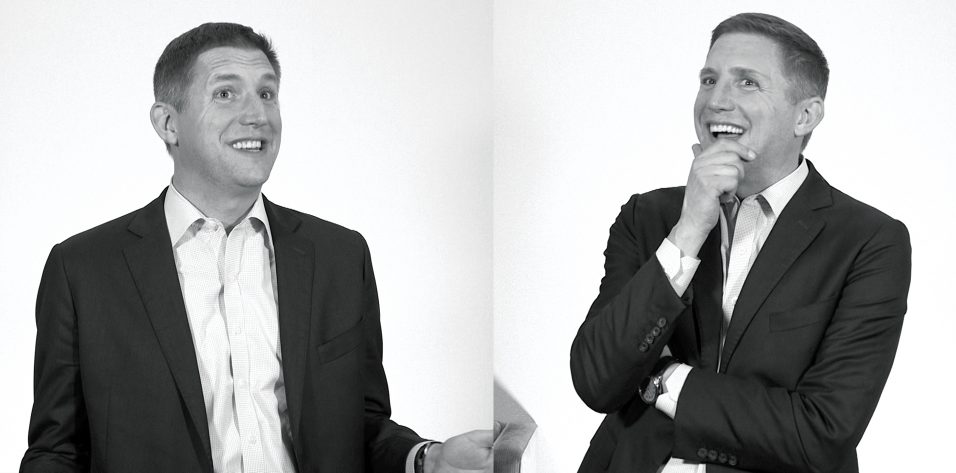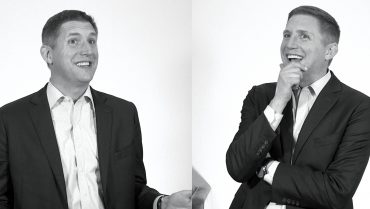BMC: Who or what drew you to ophthalmology?
William F. Wiley, MD: I grew up in an ophthalmology family. My father was an ophthalmologist, and living in a household with that exposure to the field was a big influence. There are several legacy ophthalmologists in practice now. Part of this is that ophthalmology provides a nice lifestyle, and the other part is that it’s an innovative field with constant introduction of new technologies. Ophthalmologists tend to be happy with their career choices, and that satisfaction trickles down to their children.
BMC: How did your father’s career influence yours?
Dr. Wiley: The way he practiced ophthalmology was reflective of my own interests. He was early into refractive surgery, a field that gained popularity in the late 1980s into the ‘90s. He was the first in our region to do radial keratotomy. Actually, I’m a patient of radial keratotomy: I had it done on my eyes, by my father, when I was in college.
My father was also a pioneer in optometric comanagement at a time when there was a huge divide between optometry and ophthalmology. There still is some, but it’s more collegial now. Back then, it was unusual for ophthalmologists to work closely with optometry. I remember him talking about how his relationship with optometry was frowned upon among his colleagues, and thinking, “They’re just people. What do you mean you shouldn’t be working with them? They know eyes just like you do.” At the time, I didn’t understand the traditional ophthalmology point of view. Having been exposed to the other alternative at an early age helped guide my own choices later. Now I’m partnered with optometry within our practice, and I work with community optometrists as well.
Lastly, my father’s innovative spirit influenced me. When I was in high school, we worked on some patents together. He had a patent for an adjustable-focus IOL. He and I would brainstorm and try to figure out, “What kind of technology could allow a lens to be adjusted inside the eye?” We looked at electronic- and light-adjustable methods. This was years before that type of technology became reality. But through that experience, I was able to see that a solo private practitioner could help guide the field or innovate technology in the field. So that also guided my career path.
BMC: I follow @ClearChoiceLaser on Instagram. From the posts, it looks like a fun and family-like corporate culture. As medical director, how do you promote this positive energy and keep your employees happy?
Dr. Wiley: Clear Choice has a great culture, and it does have a family atmosphere. We have had nontraditional marketing since almost day 1. Two of the partners in Clear Choice are not physicians; they are marketers by trade, and they helped create that culture. Sometimes physicians have one way of looking at things that’s different from what a business or a marketing person may see.
When I look back to some of the early marketing things I wanted to pursue, it was a picture of doctors and text saying how great doctors are. That goes only so far. Initially, some of the posts our team wanted to put out there, I said, “I don’t know, that doesn’t look very medical to me.” I had to step back and let the team run with their thoughts and ideas, and it has been extremely effective.
Even the waiting room is different from what I might have designed as a physician. My partners did not want the space to look like the typical, sterile, cold medical facility. They made it look like a local coffee shop with a warm-and-fuzzy sort of feeling. The picture I had in my mind was traditional and academic. They pushed to make it comfortable. So we have a fireplace in the lobby. We make fresh cookies and have a coffee machine making fresh Starbucks coffee. It is a totally different atmosphere that was driven by the staff and the team.
One day my business partner said, “We should get an ice cream truck.” I was like, “Why would we want an ice cream truck?” He said, “Well, who doesn’t like ice cream?” And I said, “Okay, but how will this benefit our patients, how will it help to get our name out?” We ended up buying not one but two vintage 1950s ice cream trucks, and we offer access to them for any of our past or present patients. They can reserve a truck for a kid’s birthday party or special event. We offer it as a free service, and we take donations that go to a local low-vision center.
The benefit to the practice is that, when the truck shows up at the birthday party, all of the parents say, “Wait a minute, how did you get this ice cream truck?” And the patients can say, “Oh, Clear Choice. We’re patients. It’s a great place to have your LASIK or refractive surgery done.” It helps get the name out there in a nontraditional way. It’s a fun thing that the staff gets into. I drove it to our town when we had a local festival—I was a hero to my kids and the neighborhood kids.
Listening to a partner with a nontraditional marketing idea and taking your ego out of the way can lead to interesting developments. Letting somebody else run with an idea to create a better atmosphere was initially hard for me to do, but I can see that has paid off and has produced a great culture to work in.
BMC: A little birdie told me that you’re a Dave Matthews Band fan. Tell me about when and why you started following them.
Dr. Wiley: I went to the University of Virginia, and that’s where Dave Matthews got started, at a bar called Trax. He would play every Tuesday night with a $5 cover charge. Even when he first started, he was pretty good, and he drew a crowd. I was in a fraternity, and we had an annual fall festival. We had a band every year, and it was usually a cover band, but somebody suggested Dave Matthews. And we found out he would charge $500 to play, whereas the cover band would be $800.
Looking back, it’s wild to think I saw Dave Matthews play in front of 40 people at a fraternity party. As they got bigger, we all started to adjust our class schedule—you did not want to have an 8 am class on Wednesday. He started building a local following.
BMC: If you had to nominate one creative mind in ophthalmology, whom would it be and why?
Dr. Wiley: Anybody who is a member of the Vanguard Ophthalmology Society, a group that was started in 2009 by like-minded physicians, and the innovation that comes out of this group is inspiring. For example, Malik Y. Kahook, MD, has innovated a number of products, most recently the Harmoni IOL, which was bought by Alcon. John P. Berdahl, MD, started Equinox, which is looking into the role of intracranial pressure in glaucoma.
Those are just a two members of Vanguard who have great ideas. Some members may not have invented anything yet, but the society has a collegial atmosphere of bouncing ideas off each other. Over the past 10 years, it’s been great to see such a concentration of creative minds come together and help change or shape the field.





